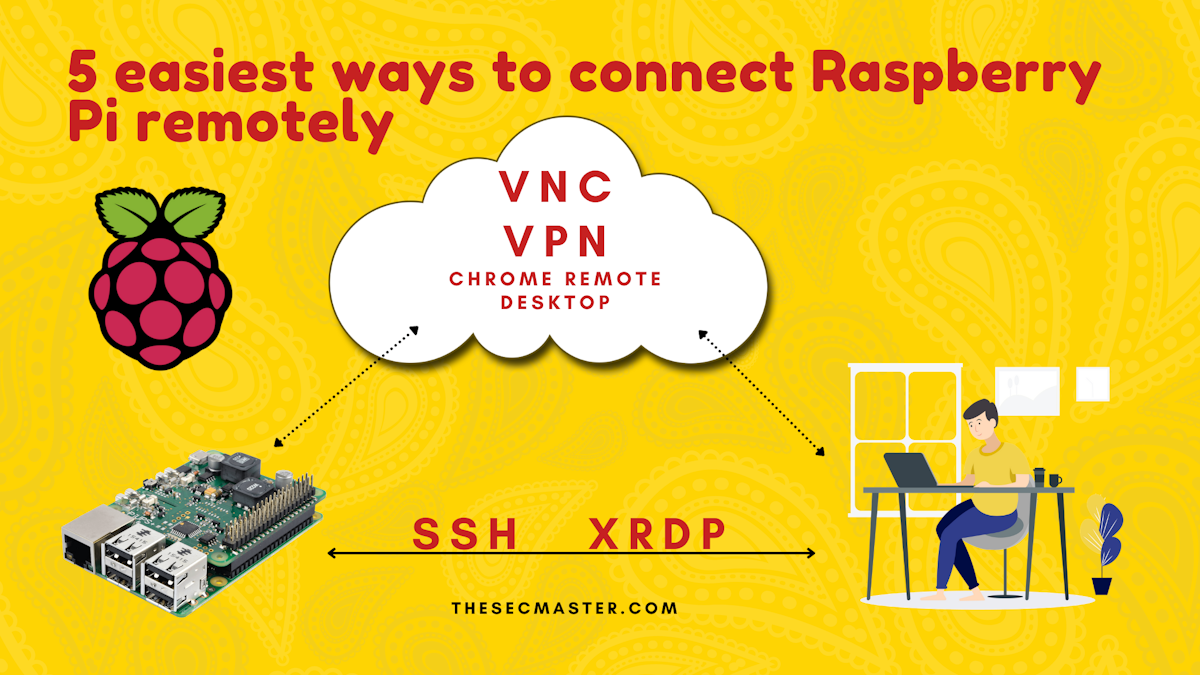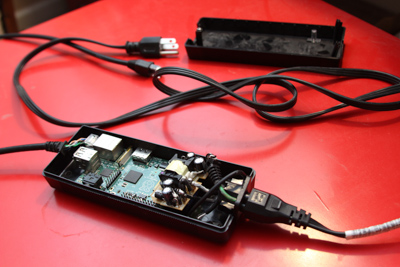How To Remotely Access Your Raspberry Pi Over The Internet: A Comprehensive Guide
The Raspberry Pi, with its small footprint and low energy demands, has become an incredibly popular choice for a myriad of projects, from home automation to IoT deployments. Its versatility is undeniable, but what if you need to manage your Pi when it's tucked away in a corner, deployed in a remote location, or simply when you don't want to clutter your desk with an extra keyboard, mouse, and monitor? This is where the power of remote access comes into play. Accessing your Raspberry Pi from another computer is a common user request, and for good reason.
Remote access to your Raspberry Pi can be incredibly useful, especially if you maintain a "fleet" of remote microcomputers or even just one that's hard to reach. It eliminates the need for physical peripherals, saving you money and valuable desk space. This allows you to work on projects and manage the Pi without needing physical access, providing unparalleled convenience and flexibility. Fortunately, there are several easy methods to access and control the Pi over a network or the internet, allowing you to connect to your Raspberry Pi's desktop and command line directly from any browser or dedicated software. In this comprehensive guide, we will explore the most common and easy methods to connect to your Raspberry Pi remotely over a network or the internet.
Raspberry Pi Remote Access Requirements
Before we dive into the nitty-gritty of remote access, let's quickly cover what you'll need. Luckily, we won’t need much hardware to achieve our goal because the solutions we’ll discuss today mainly require remote desktop software and a few basic prerequisites. Here are the essential Raspberry Pi remote access requirements:
- A Raspberry Pi with Internet Access: This is fundamental. Your Pi needs to be connected to the internet, either via Wi-Fi or Ethernet.
- Reliable Internet Connection: While Wi-Fi works, an Ethernet connection is recommended for speed and stability, especially if you're dealing with demanding tasks or frequent access.
- A Client Device: This can be any computer (Windows, macOS, Linux), tablet, or even a smartphone from which you intend to access your Raspberry Pi.
Finding Your Raspberry Pi's IP Address
To initiate a remote connection, you'll often need to know your Raspberry Pi's IP address on your local network. While the exact steps might vary slightly depending on your Raspberry Pi OS version, a common way to find it is by opening a terminal on your Pi and typing hostname -I or ip a. You'll likely see several lines of information. Check the block where the general.type field reads 'wifi' or 'ethernet' to find the IP address. In this case, you can access this device using the ipv4 address, often found in the ip4.address[1] field, which typically looks something like 192.168.1.X.
Common Methods for Remote Access to Raspberry Pi
There are many different solutions for remote access to Raspberry Pi, ranging from command-line interfaces to full graphical desktop environments. The choice often depends on your specific needs and comfort level. From the SSH method of remote terminal access to Raspberry Pi Connect, there is a remote access method that will work well for your project. Let's explore the most popular and effective techniques.
SSH (Secure Shell) for Command Line Access
SSH, or Secure Shell, is a cryptographic network protocol that allows you to securely access your Raspberry Pi's command line remotely. For enhanced security and remote access over the internet, you’ll definitely want to install SSH (Secure Shell) on your Raspberry Pi. It's often enabled by default or easily activatable via the Raspberry Pi Configuration tool (sudo raspi-config). Once enabled, you can open a terminal on your client device and use the command ssh pi@your_pi_ip_address (replacing 'your_pi_ip_address' with your Pi's actual IP). This method is lightweight, efficient, and perfect for managing files, running scripts, and performing system updates without needing a graphical interface. It's a fundamental skill for any Raspberry Pi user and a key part of how to access Raspberry Pi SSH sessions over the internet.
VNC Connect for Desktop Access
While SSH is excellent for command-line tasks, sometimes you need to see and interact with your Raspberry Pi's full desktop environment. This is where VNC (Virtual Network Computing) comes in. Remote log into your Raspberry Pi’s full operating system using VNC Connect. VNC has long been the best way to access any computer remotely on the same network. Recently, VNC Connect came out to provide more robust features, including cloud connectivity that simplifies remote access over the internet without complex network configurations. With VNC Connect installed on your Pi, you can now access your Raspberry Pi’s desktop environment securely from anywhere with internet access, giving you a complete graphical interface experience just as if you were sitting in front of it.
Raspberry Pi Connect: The Official Solution
To overcome some of the traditional complexities of remote access, the folks at Raspberry Pi came up with an easy and innovative solution: Raspberry Pi Connect. This is a secure remote access solution for Raspberry Pi OS, allowing you to connect to your Raspberry Pi desktop and command line directly from any browser. With Raspberry Pi Connect, you can directly access your Pi through a web browser! This eliminates the need for installing specific client software on your accessing device and simplifies the connection process significantly. It's a game-changer for users who want straightforward, reliable remote access with minimal setup. This allows users to remotely access and control their Raspberry Pi from anywhere in the world, as long as they have an internet connection.
Other Advanced Remote Access Solutions
Beyond SSH, VNC, and Raspberry Pi Connect, there are other powerful platforms and methods available, especially for those managing a fleet of IoT devices or requiring more advanced features. For instance, SocketXP, a popular IoT remote access software platform, enables you to easily manage, control, monitor, and remote access a fleet of Raspberry Pis from a web portal. Solutions like Pinggy.io allow you to learn how to securely connect to your Raspberry Pi or IoT device remotely over the internet without the need for port forwarding, by creating secure tunnels for seamless remote management. These platforms often provide enhanced security features, centralized management dashboards, and robust connectivity options. Explore methods such as SSH, VNC, and RDP, and discover how to use services that create secure tunnels for seamless remote management. Once the remote access software is installed on the Raspberry Pi, the Raspberry Pi device can be securely accessed from anywhere in the world, enhancing your IoT device control and management from anywhere in the world.
For more detailed technical information and specific setup instructions for any of these methods, you can always refer to the official documentation for Raspberry Pi computers and microcontrollers.
Enhancing Security for Remote Access
While remote accessing your Pi is very convenient, it also comes with security risks. Opening your Raspberry Pi to the internet means exposing it to potential threats if not properly secured. Here are some tips for enhancing security of remote access to help keep your Pi secure when accessed over the internet:
- Use Strong, Unique Passwords: Never stick with default usernames and passwords. Create complex, unique passwords for your Pi's user accounts and any remote access services.
- Implement SSH Key-Based Authentication: For SSH, switch from password authentication to SSH keys. This is far more secure as it relies on cryptographic keys instead of easily guessable passwords.
- Keep Your OS and Software Updated: Regularly update your Raspberry Pi OS and all installed software. Updates often include security patches that fix vulnerabilities.
- Configure a Firewall: Use a firewall (like
ufwon Linux) to restrict incoming connections to only the necessary ports (e.g., SSH on port 22, VNC on port 5900). - Change Default SSH Port: Instead of using the default SSH port (22), change it to a non-standard port to deter automated scanning bots.
- Enable Two-Factor Authentication (2FA): If the remote access solution supports it (like some VNC services or cloud platforms), enable 2FA for an extra layer of security.
- Use a VPN: For the highest level of security, set up a Virtual Private Network (VPN) on your home network or directly on your Pi. This creates a secure, encrypted tunnel, making your remote access much safer.
- Monitor Logs: Periodically check system logs for any unusual activity or failed login attempts.
Conclusion
Remote access to your Raspberry Pi is a powerful capability that transforms how you interact with your projects and devices. Whether you're managing a single Pi in your home or overseeing a fleet of IoT devices globally, the ability to connect and control your Raspberry Pi remotely over the internet is invaluable. You can now access your Raspberry Pi’s desktop environment securely from anywhere with internet access, or simply manage it via the command line. Access your Raspberry Pi projects from anywhere, giving you the freedom and flexibility to innovate without geographical constraints. By understanding the available methods—from SSH and VNC to the convenient Raspberry Pi Connect and advanced IoT platforms—and by prioritizing security, you can confidently take full remote control over the internet of your Raspberry Pi, making your digital endeavors more efficient and accessible than ever before.

3 Easy Ways to Access Your Pi Over the Internet Remotely – RaspberryTips

5 Simple Remote Access Methods for Raspberry Pi

Raspberry Pi Remote Access Vpn – Raspberry